Swine Discovery - Presentations - Judging Swine
Swine Discovery - Presentations - Judging Swine
Key Points for Judging Swine
- Evaluate animals first from the ground up and then from the rear forward.
- Rank the traits for their importance.
- Evaluate the most important traits first.
- Eliminate any easy placings.
- Place the class based on the volume of the important traits.
Ranking of Traits for Market Hogs
- Degree of muscling
- Growth
- Capacity or volume
- Degree of leannesss (amount of fat)
- Structure and soundness
Ranking of Traits for Maternal Line Breeding Gilts
- Structure and soundness
- Growth
- Underline quality
- Capacity or volume
- Degree of muscling
- Degree of leanness (amount of fat)
Ranking of Traits for Terminal Line Breeding Gilts
- Structure and soundness
- Degree of muscling
- Growth
- Capacity or volume
- Degree of leanness (amount of fat)
- Underline quality

Evaluating Degree of Muscling
Indicators of muscling to evaluate include:
- Thickness through the center of the ham (stifle area).
- Width between rear feet when the pig walks or stands.
- Shape over the loin (top) - butterfly shape is desired.
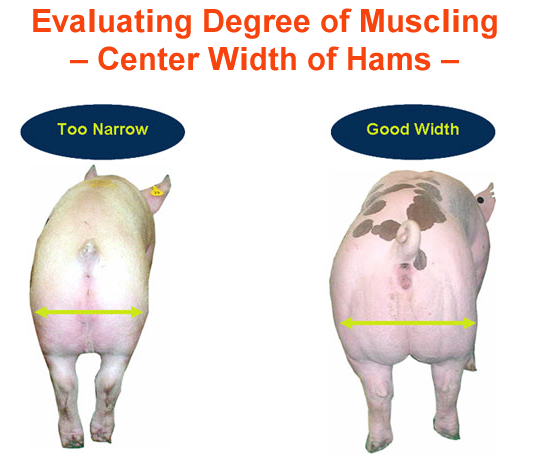
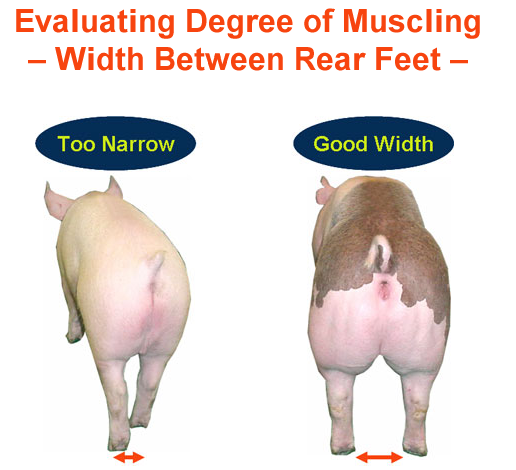
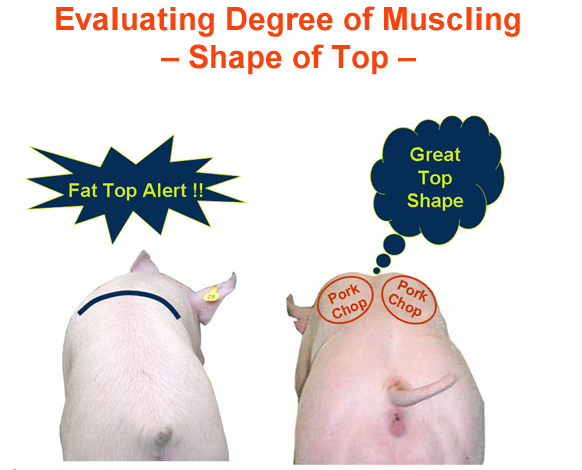
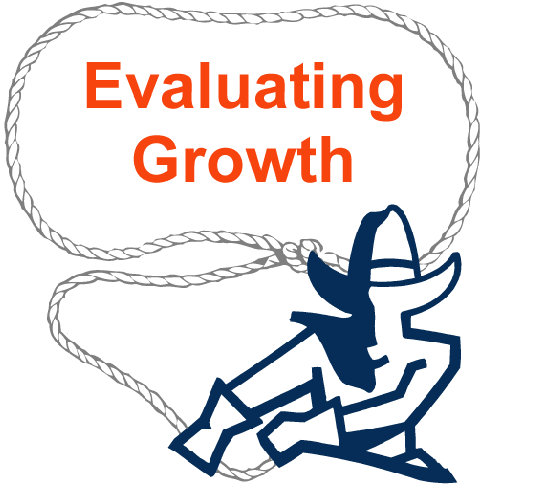
Evaluating Growth
- It is important that pigs have good growth rate and reach market weight at an early age.
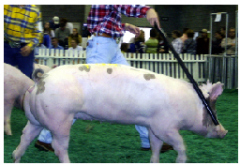
Tips for evaluating growth:
- Unless instructed otherwise, assume all pigs in the class are the same age.
- Evaluate growth based on the weight of the pigs in the class.
- Rank the pigs from heaviest to lightest (heaviest pig = fastest growth)
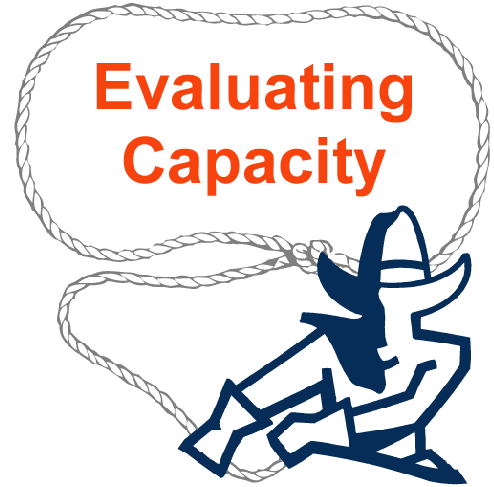
Evaluating Capacity (Volume)
Capacity (volume) is determined by 4 factors.
- Depth of body
- Length of body
- Width through the rib and chest
- Balance - how well does the pig's depth, length, and width length fit together.
Evaluating Capacity (Volume - Depth of Body)
Good depth of body is important for:
- Capacity for feeding in market hogs and gilts
- Good ability to eat and grow
- Capacity for reproduction in breeding hogs
- Ability to carry large litters
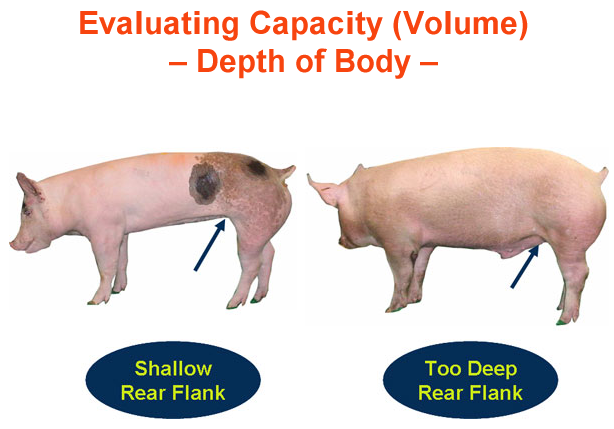
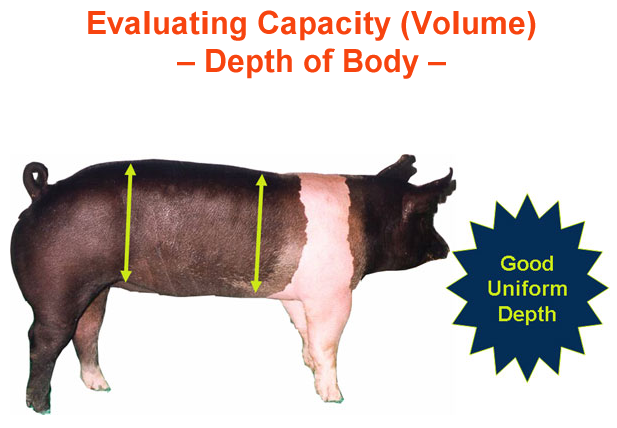
Evaluating Capacity (Volume) - Length of Body
Good length of body is important for:
- Adds too capacity for feeding in market hogs
• Good ability to eat and grow - Underline capacity in breeding hogs
• Adequate space for piglets to nurse - Proper balance of traits affecting capacity
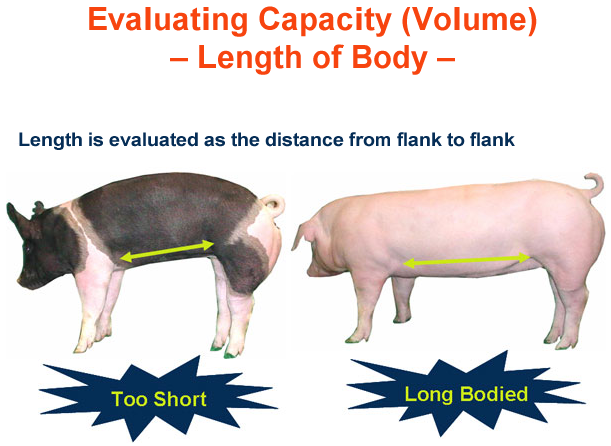
Evaluating Capacity (Volume) - Width
- Pigs with good width will be wide based
• Walk wide in front and rear
• Good width through chest - The top 1/3 and bottom 1/3 should be the same width, and the middle 1/3 should be wider
• Good spring of rib
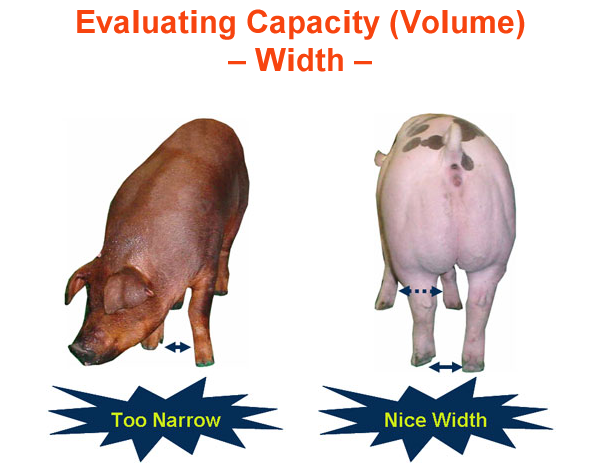
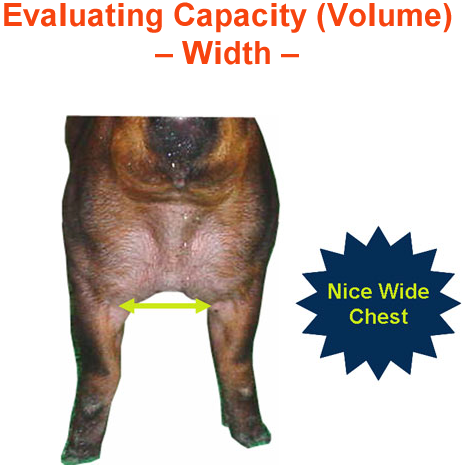
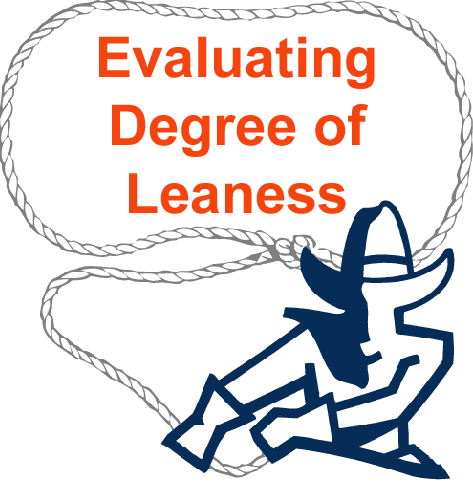
Evaluating Leanness
- Degree of leanness is influenced by:
• Degree of muscling
• Frame size
• Sex
• Age and weight - Fat is deposited from the front to the rear as the animal matures.

Evaluating Leanness
- Leanness can be determined by the presence or absence of indentations in the following areas:
• Over and behind the shoulders
• Ham-loin junction
• Dimple just in front of the tail head - Key points to remember:
• Muscle is hard, fat is soft
• Muscle is firm, fat is loose
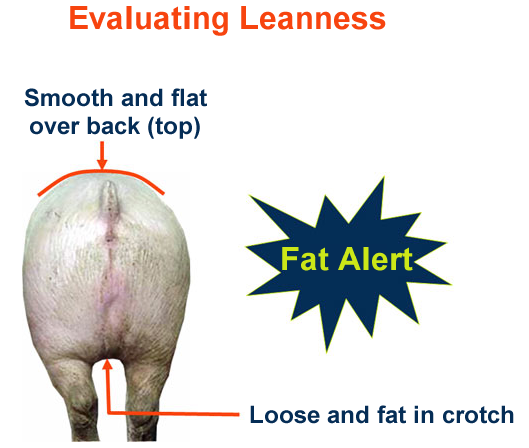
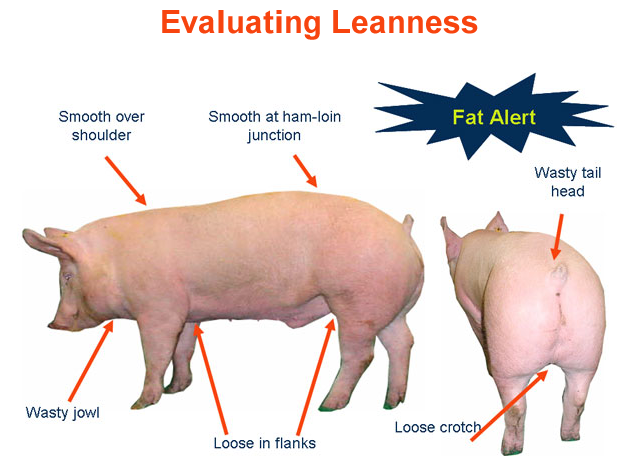
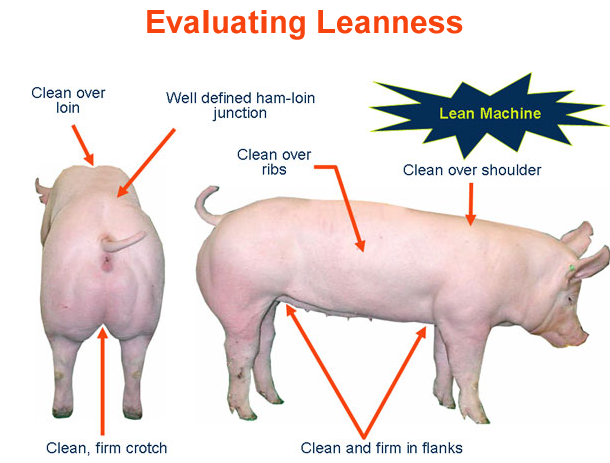
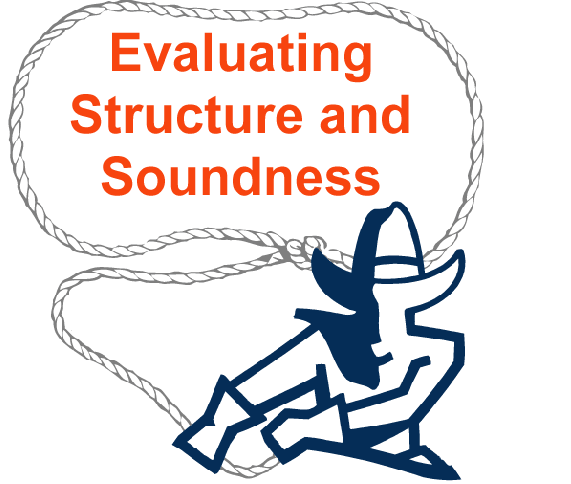
Evaluating Structure/Soundness
When evaluating structure and soundness, pay close attention to the following:
- Front and rear leg columns
- Feet and pasterns
- Hocks
- Knees
- Rump
- Shoulder
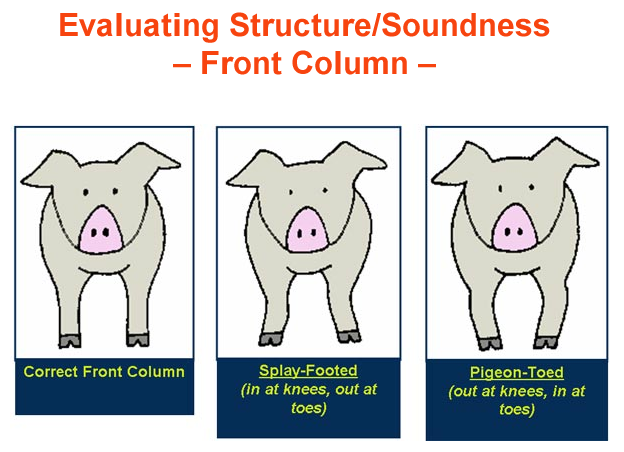
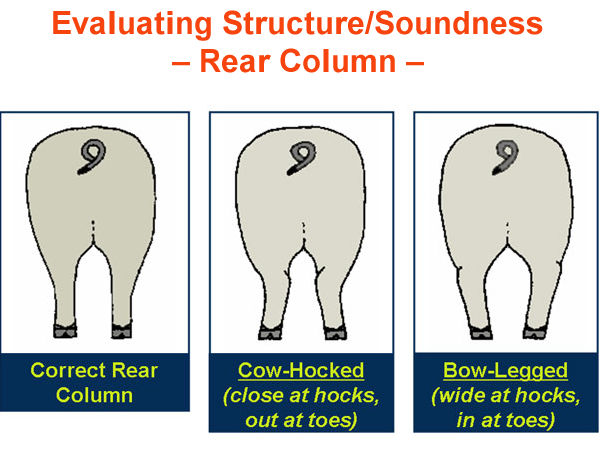
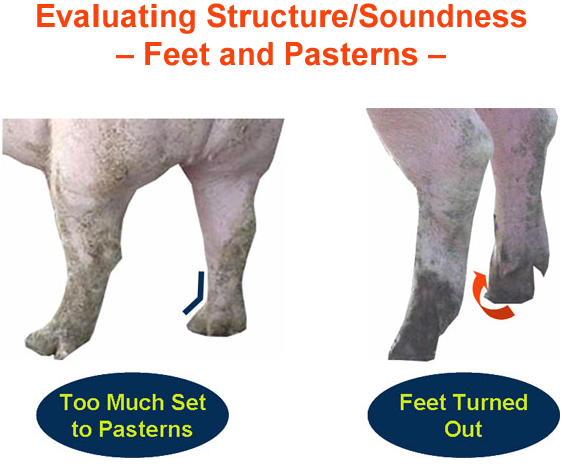
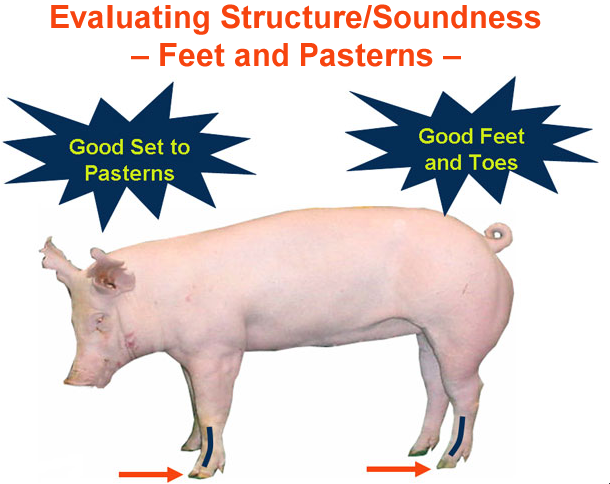
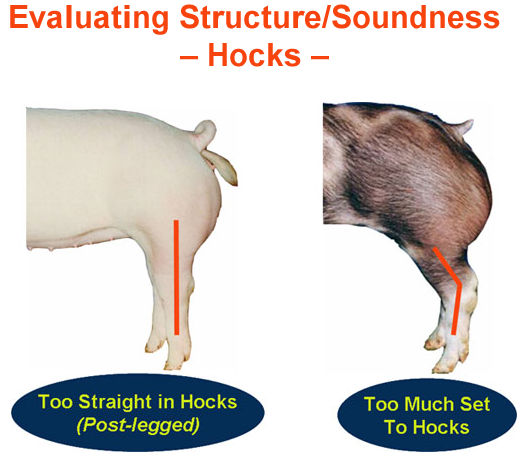
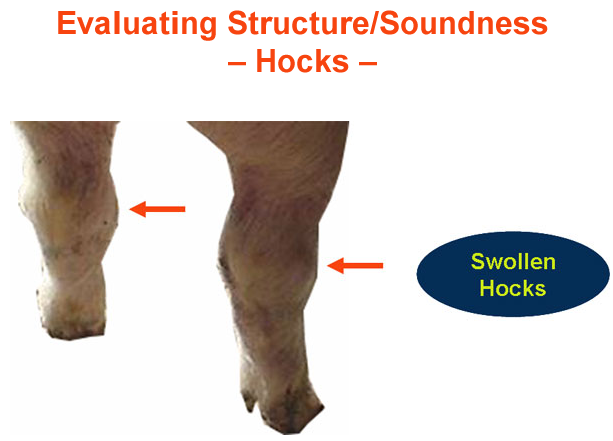
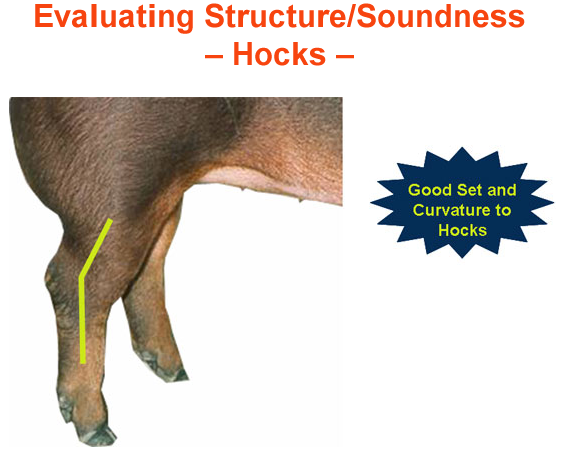
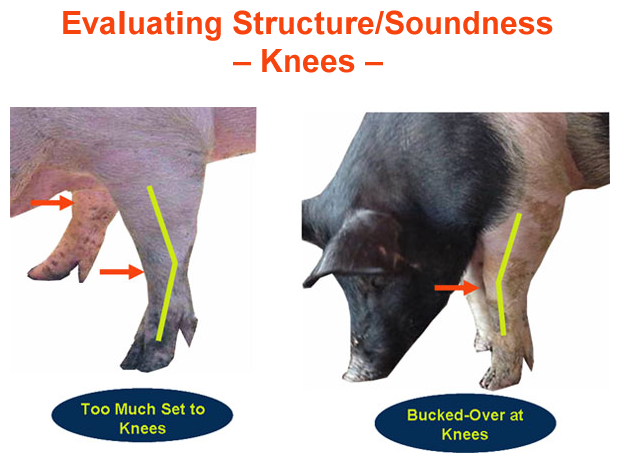
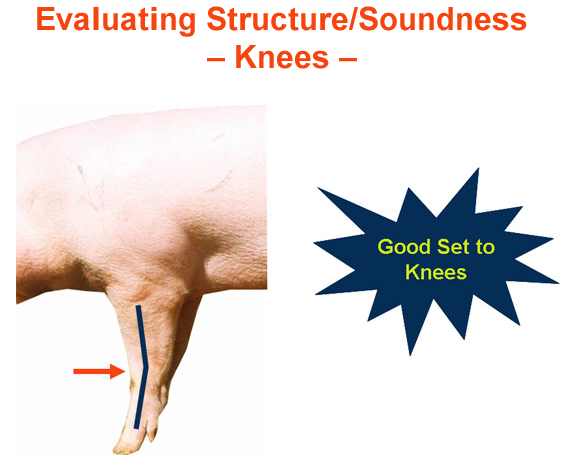
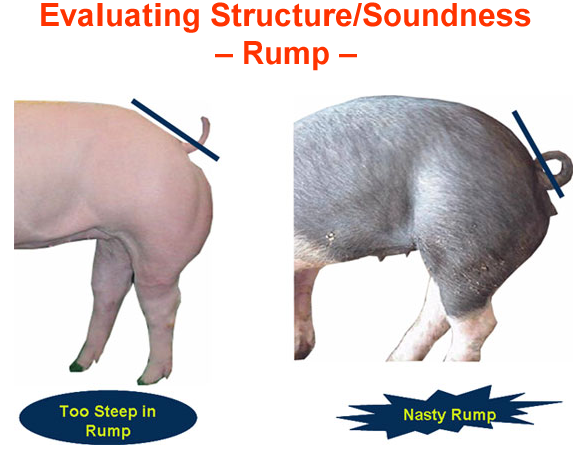
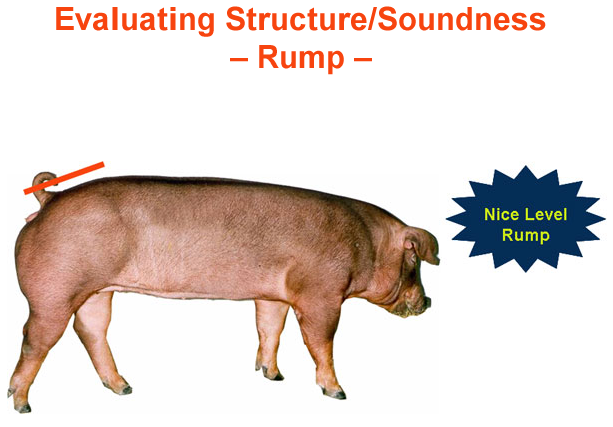
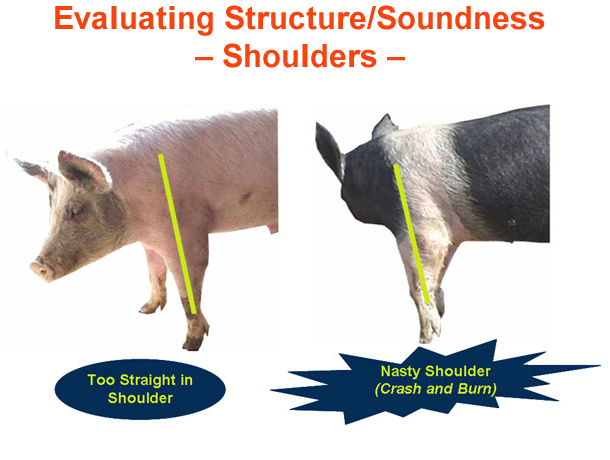
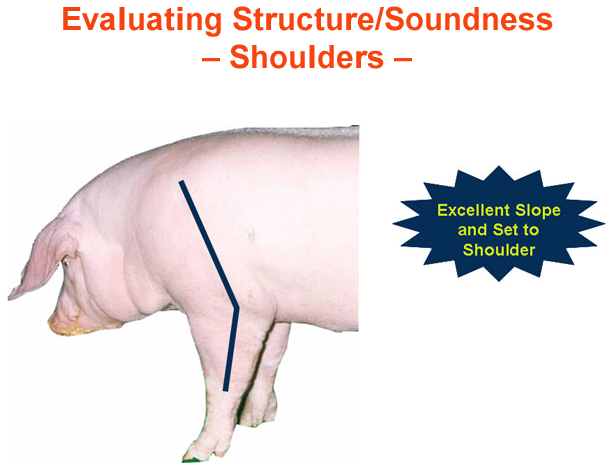
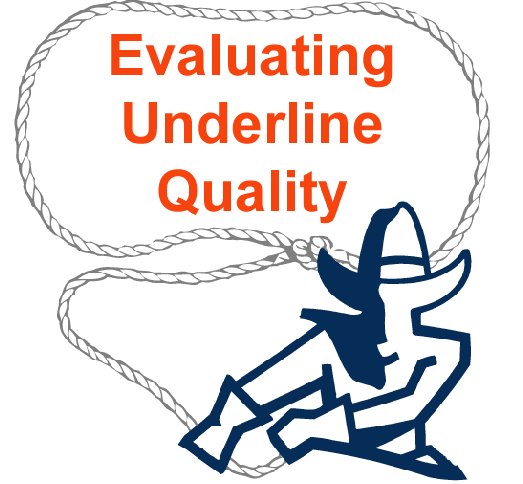
Evaluating Underline Quality
A good underline will consist of the following:
- Both rows of teats easily accessible
- Six to seven teats per side
- Teats evenly spaced
- Pencil eraser-sized teats
- Free from pin, blind, and inverted nipples
